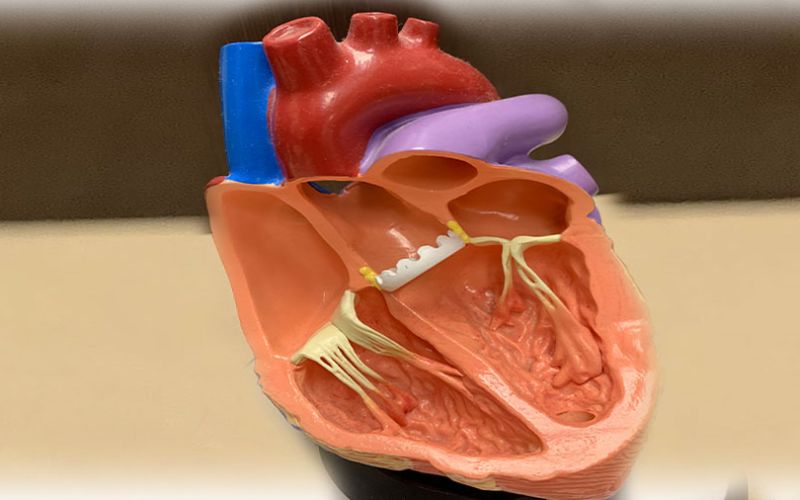Tricuspid Valve Disease
The tricuspid valve is one of the right sided valves that helps prevent blood from backing up into your abdominal organs and liver. The right atrium receives blood from the body and then the blood passes through the tricuspid valve into the right ventricle to be pumped to the lungs for exchange of oxygen and carbon dioxide. Most commonly, when the tricuspid valve is diseased it results in a leaky valve and right atrial overload. Sometimes the tricuspid valve can be too tight.
- Risk factors for tricuspid valve disease include:
- Rheumatic fever
- Pulmonary hypertension
- Chronic pulmonary embolism
- Dilation of the right ventricle
- Cardiomyopathy (weakening of the heart muscle)
- Endocarditis (infection of the heart valve)
Mild tricuspid valve disease may not have any symptoms and in this case treatment is not needed. If the dysfunction worsens symptoms can include:
- Visible veins that pulse in the neck
- Swelling
- Fatigue
- Shortness of breath
- Weakness
- Abdominal bloating or ascites
Tricuspid valve disease is often seen in conjunction with other valve disease, most commonly the mitral valve. If you are being evaluated for mitral valve disease your surgeon will also evaluate the other valves in your heart. Sometimes backpressure caused from dysfunction of the mitral valve allows blood tp put pressure on the lungs and in return affect the tricuspid valve. Studies have shown that it can be prudent to address mitral valve dysfunction at the time of mitral valve surgery.
The first step to diagnosis is an evaluation by your doctor including medical and family history, physical exam, and risk factor evaluation. No single test is used to evaluate tricuspid valve disease. Your doctor may order an electrocardiogram (EKG), chest x ray, or blood tests. Often an echocardiogram (ultrasound) of your heart is required to evaluate the tricuspid valve.
- How is tricuspid valve disease treated?
- A tricuspid valve with only mild dysfunction and minimal if any symptoms may not need to be treated at all. If there are mild symptoms sometimes medications may be used.
If the amount of dysfunction of the tricuspid valve is significant enough to warrant surgery, repair is usually performed. Most often tricuspid valve repair consists of sewing a support ring into the annulus (support structure) of the valve. The valve can also be reshaped, tightened down, and holes can be patched. All tricuspid valve surgery runs the risk of requiring a permanent pacemaker, but the risk of needing a pacemaker tends to be less in tricuspid repair compared to tricuspid valve replacement.
If the tricuspid valve is damaged and not able to be repaired replacement is performed. Replacement is typically done with a biologic valve. Lifelong anticoagulation is often recommended in these cases.
Want to know more? https://ctsurgerypatients.org/adult-heart-disease/tricuspid-valve-disease
Tri Ad surgical annuloplasty band: https://www.medtronic.com/us-en/healthcare-professionals/products/cardiovascular/heart-valves-surgical/tri-ad-adams-annuloplasty-band.html
